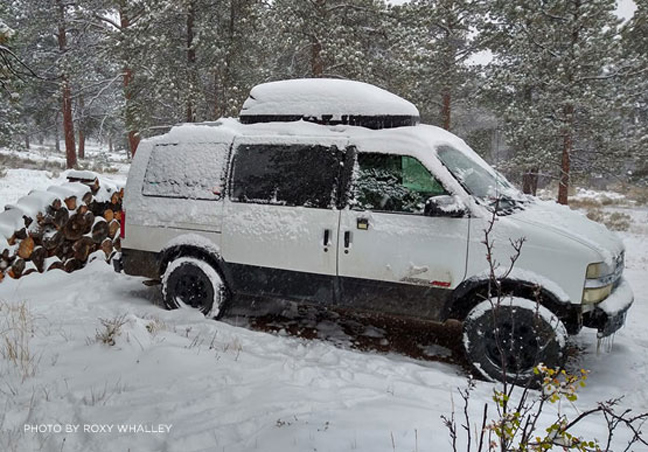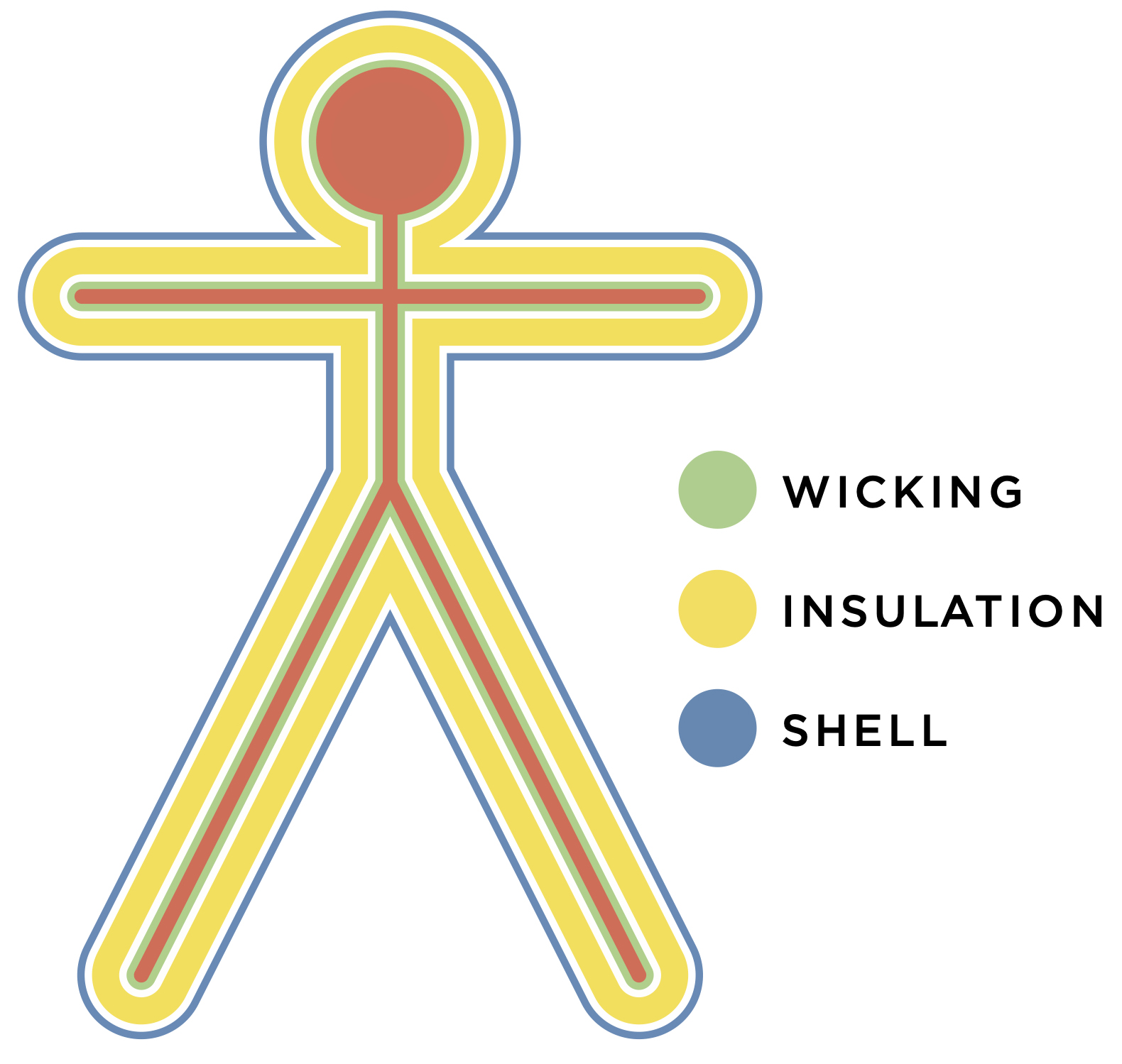How Can We Help?
Staying warm without a heater

When we think about keeping warm in our mobile abodes what usually comes to mind is some type of heater. The various types each have advantages and disadvantages, and we’ve examined them before. But what if you had a free heat source that took up no additional space and could go wherever you went? That would be great, right? Well, you already have such a thing: your body.
Why do we get cold even though our body generates temperatures that are more than cozy? Because we usually don’t hold onto all that heat.
The first step in keeping warm isn’t insulating your rig. It’s insulating yourself. Feeling cold is heat leaving your body, not cold moving in. Cold is the absence of heat. So hold onto your heat. Sure, we insulate ourselves when we go outside, but we can do it when we’re inside as well. It’s what our ancestors did. It’s how the Inuit stay warm in igloos.
If you’re from a region that has serious winters, you know how to dress for the cold. For those of us who’ve lived in less harsh conditions and never needed to learn that skill, the answer is layering. Not just a haphazard collection of whatever cozy clothes you have, but layers with specific functions.

BASE LAYER
Back in the olden days, everyone wore undies made of wool. Or silk, if they were rich. It worked then and it works now. Fortunately, we have wool that’s much less itchy than what our great-grandparents wore, and synthetics that are cheaper and more practical than silk.
The point of the base layer is to wick away moisture (sweat) that can draw heat from your body. Also, if it’s soft and snug, it’s like wearing a nice comforting hug. It’s my opinion, though, that wicking isn’t necessary if you’re not doing anything that causes you to sweat. Outdoor sports? Chopping wood? Digging out of a ditch? Yes for wicking. Puttering around in your rig? Wicking is probably not a priority.
MIDDLE LAYER
This is the insulating layer. Or layers. Several thinner layers can be removed or added to adjust for the temperature and your activity level. The less active you are, and therefore the less heat your body is generating, the more insulation you’ll need.
Synthetic fleece tops and pants come in several weights and make a good insulating layer. The same is true of wool sweaters and pants. Natural or synthetic down vests are also a good quick-change layer.
Maximum insulation will come from down or synthetic jackets and pants. These are rated for different temperatures. It’s probably wiser to choose those rated for lower temps than the coldest you imagine you’ll ever encounter, even if it means looking like the Michelin Man. Also, if you get them a size larger, the air space acts as further insulation.
OUTER LAYER
This layer’s main purpose is water and wind protection. Parkas and snow pants usually have their own outer layer, but if it’s not so cold that you need that much insulation, a thin shell over your wool or fleece middle layer can do the trick.
YOUR EXTREMITIES
Since our hands and feet are farthest from our heart and we have less meat on those bones, they get cold first (well, right after our face) and make us feel most miserable.
I have three pairs of gloves: light fleece just to keep the chill off, ski gloves for when it’s really cold, and some canvas-and-leather work cloves I can wear by themselves when it’s not cold or over the fleece gloves when I need to do dirty work. Some people like fingerless gloves for the manual dexterity advantage. But it’s my fingers that get coldest, not my palms. If I need to do something that requires bare fingers, I slip off the gloves. But whatever works for you.
Your feet love wool socks. They love wool socks over silk or poly liners even more. And to really make them warm and happy, down booties over the socks and liners—especially when you’re hanging out in your rig. There are booties with and without rubber-ish soles for walking outside. I know someone who doubles up on booties.
The debate still rages whether you lose 90% of your body heat via your head, but if it’s uncovered, you’re losing more heat there than anywhere else. Knit wool caps are always good, even under parka hoods. Trapper hats with ear flaps (think Marge Gunderson in “Fargo”) are hard to beat, in either real or faux fur versions. Then there are balaclavas that cover your entire head and allow you to uncover only as much of your face as you like. Scarves or neck gaiters are useful, too.
SLEEPING
But what about keeping warm at night, when it’s the coldest and you’re totally inactive? You don’t need to depend exclusively on your bedding and warm jammies. You can sleep wearing any of the clothing mentioned above. That might seem weird or even wrong, but one gets used to it. And when you get up you’re already dressed. No shivering while you rush to get into warm clothing.
OTHER STRATEGIES
Since exercise warms us, be as active as you can. Even if you don’t want to go outside, there are heat-generating things you can do while sitting in your rolling home. Bending over and straightening up, wiggling, shuffling objects around, chair dancing, isometrics…
Position your rig so as much sun as possible comes in the windows, then cover the windows to hold as much of that heat as possible. Park out of the shade and out of the wind when possible. Avoid low-lying areas where colder air settles. And if it snows, leave it to insulate you, the same way an igloo does.
Run your engine to get heat, if you must, but there’s the danger of carbon monoxide leaking into a vehicle when it’s not moving.
No, living without heat isn’t fun (well, except for a few weird people) but if it’s your situation you can make it less awful. And even if you have a heat source, dressing warmly allows you to use it less, saving fuel or electricity.
Al Christensen has been living happily and warmly in a self-converted van since 2013.
